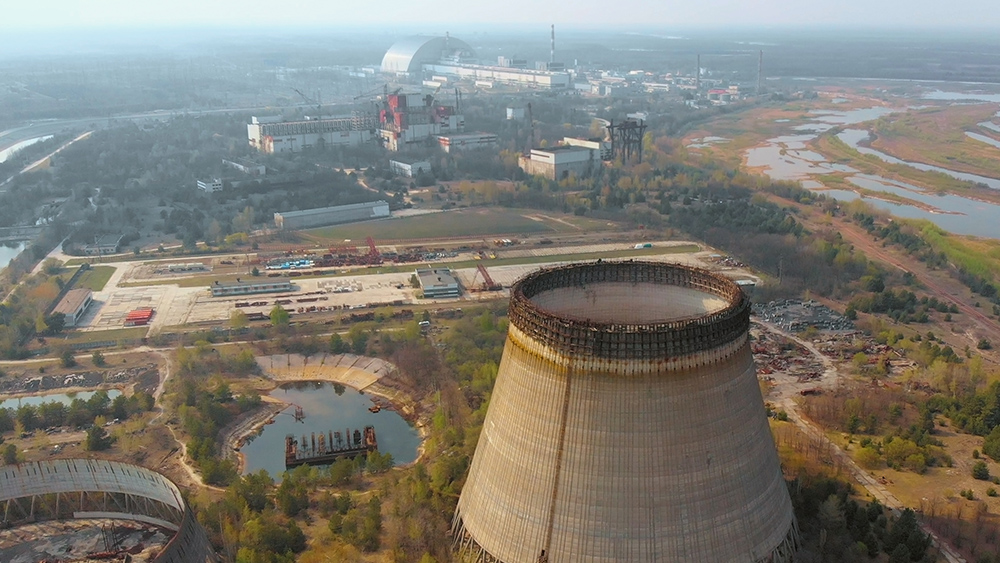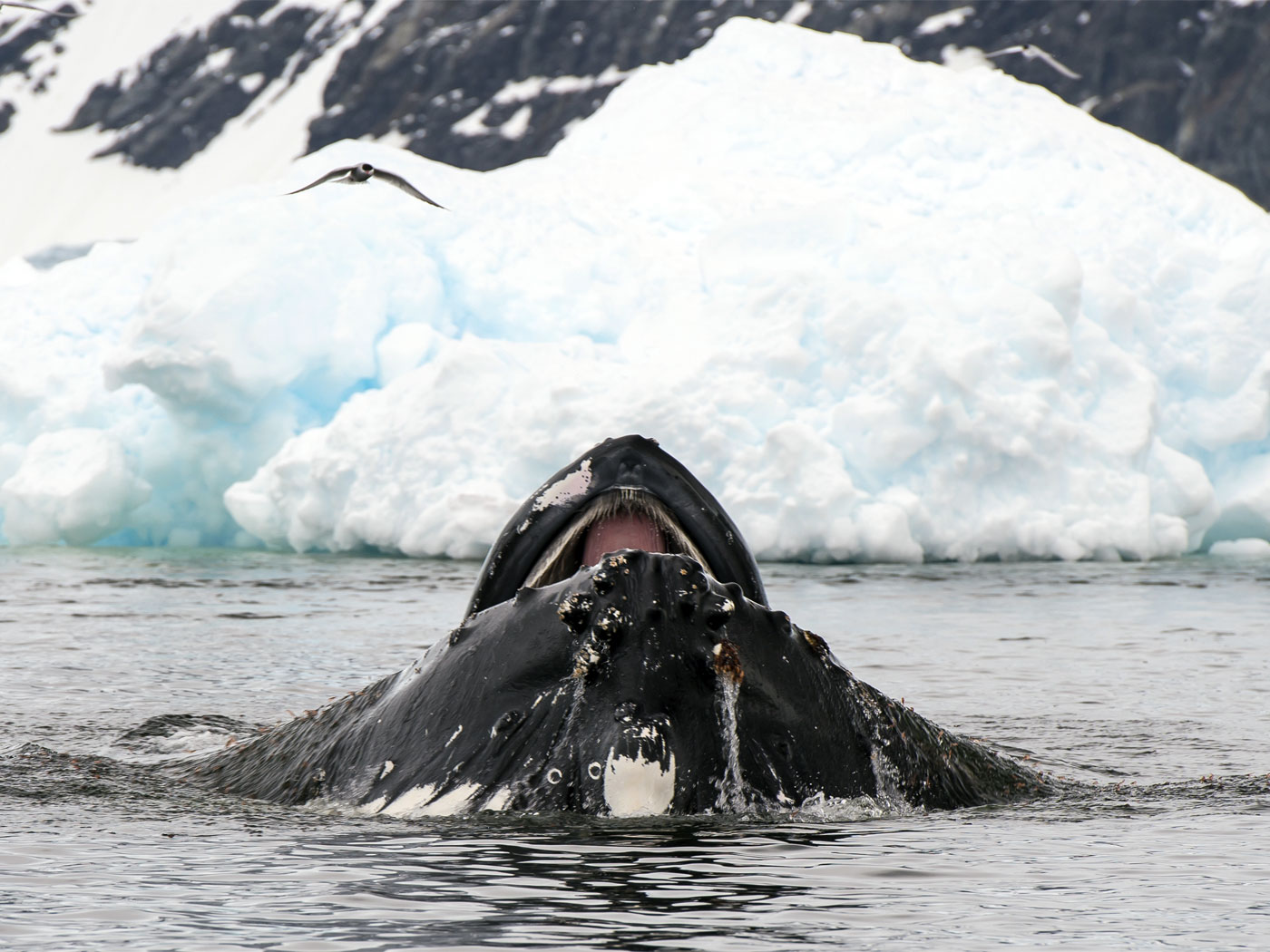A recent Public Broadcasting Service (PBS) report highlighted creatures’ designed innate capacity to self-adjust to incredibly challenging exposures.1 The article, by Stuart Thompson who is a senior lecturer in plant biochemistry at the University of Westminster, describes plants thriving around the former Chernobyl nuclear reactor in spite of high doses of radiation. Though he claims the radiation-resistant mechanisms in plants somehow evolved, the characteristics of their adaptations are far more consistent with systems designed to be adaptable.
On April 26, 1986, reactor four at the Chernobyl Nuclear Power Plant in Ukraine overheated and exploded. The intense radiation was lethal to dozens of reactor workers and sickened thousands of other over time. The entire city of Chernobyl was evacuated and, because the intense radiation will last for centuries, a 1,000 square mile exclusion zone around the reactor was established.
Thompson briefly discusses the observation of why plants don’t die from cancer. He notes that remarkably “Chernobyl’s exclusion zone isn’t devoid of life. Wolves, boars and bears have returned to the lush forests surrounding the old nuclear plant. And when it comes to vegetation, all but the most vulnerable and exposed plant life never died in the first place, and even in the most radioactive areas of the zone, vegetation was recovering within three years.”
These cases of rapid, and in some cases immediate, adaptation are at clear odds with Darwinian selectionist theory. Evolutionary theorist, Andreas Wagner, envisions that “Over thousands and millions of generations, copy error after tolerable copy error can thus accumulate and slowly change a protein’s amino acid sequence.”2 Wagner characterizes a “trial and error” process fueled by a copious flood of random errors. To evolutionists, a few lucky solutions are source material for potentially innovative biological traits. Wagner acknowledges that “error” is synonymous with death. His view aligns with the eminent evolutionist Stephen J. Gould, who understood that evolution requires copious “hecatombs of death as preconditions for limited increments of change” in “a theory of ‘trial and error externalism.’”3
Solutions depicted as trial-and-error or hit-and-miss would mean that evolution “does not work as an engineer works. It works like a tinkerer….”4 The anti-design thrust of evolutionary theory’s “trial-and-error” conjecture is rather obvious. For, in total contrast, when humans build something and the consequences of failure are catastrophic, lethal, or if time is of the essence, these human engineers can’t accept a trial-and-error process, but they instead design targeted solutions characterized as regulated, rapid, and repeatable. Human engineers virtually never allow any chance processes to enter their design process—it would be ruinous to the objective. Trial-and-error tinkering is the opposite of optimized engineering.
Field investigations at the Chernobyl site afford an opportunity for a head-to-head test of how adaption should happen as predicted by Darwinian selectionism versus a design-based model. Are adaptive changes characterized as trial-and-error or do creatures seem to have innate solutions—operating within parameters—that precede the challenge? Operational parameters are important since many organisms at Chernobyl faced immediate exposures exceeding their limits and died or gave birth to malformed offspring.
Thompson said, “Interestingly, in addition to this innate resilience to radiation, some plants in the Chernobyl exclusion zone seem to be using extra mechanisms to protect their DNA, changing its chemistry to make it more resistant to damage, and turning on systems to repair it if this doesn’t work [added emphasis].” His observations coincide with research on the progeny of Arabidopsis plants from Chernobyl. Several Russian scientists discovered that when exposed to high radiation there was a resistance to mutations through a more than 10-fold decreased frequency of extrachromosomal homologous recombination, major differences in the expression of genes controlling DNA-repair and for proteins removing dangerous free radicals, and a higher level of global genome methylation.5 Other research on several bird species at Chernobyl found that they also have internal mechanisms for detecting free radical molecules that are a byproduct of radiation exposure and then up-regulate mechanisms for DNA repair.6 Because all DNA damage was repaired more quickly, radiation-exposed birds surprisingly “may even obtain beneficial hormetic effects following an adaptive response.”
It is now obvious that creatures have innate mechanisms that enable them to self-adjust to a higher range of radiation than anticipated. The existence of these systems precedes radiation exposure—Chernobyl was a unique radiation producing event—as there has not been enough time for them to have developed due to evolutionary “tinkering” via “trial-and-error” struggles to survive.
So, when did all of the necessary evolutionary “tinkering” to produce radiation-resistant systems happen? With undaunted faith in an evolutionary theory impervious to facts, Thompson mentally buries the inconsistency by claiming that “Levels of natural radiation on the Earth’s surface were much higher in the distant past when early plants were evolving, so plants in the exclusion zone may be drawing upon adaptations dating back to this time in order to survive.” Rather than believing in speculative just-so stories, the Institute for Creation Research has been promoting an organism-focused, design-based model of adaptation called Continuous Environmental Tracking (CET).7 This model explains what organisms are doing when they adapt. The organism-focused arm of the framework hypothesizes that: organisms possess internal mechanisms that enable them to actively and continuously track environmental variables and respond by self-adjusting to changing environments—which results in their adaptation. The other design-based arm assumes that these internal mechanisms utilize the same engineering principles that constrain how human-designed objects self-adjust to changes. CET postulates that how organisms adapt is via innate systems with elements analogous to those within human-engineered tracking systems, namely: input sensors, internal logic mechanisms to select suitable responses, and actuators to execute responses. CET, therefore, expects that the creatures’ self-adjustments would be characterized as regulated, rapid, and targeted to specific challenges.
People should be thankful like Thompson in that “Life is now thriving around Chernobyl. Populations of many plant and animal species are actually greater than they were before the disaster.” The credit for that should not go to selectionism’s mystical personifications of nature who is seen as favoring some organisms as either a “selective” breeder, “tinkerer,” or “blind watchmaker.” Instead, the Lord Jesus Christ should be honored as the engineering genius who built into creatures their innate radiation-resistant systems that enable them to fill even the Chernobyl disaster site.
References
1. Thompson, S. Why plants don’t die from cancer. PBS. Posted at pbs.org on June 30, 2019 accessed July 1, 2019.
2. Wagner, A. 2014. Arrival of the Fittest: Solving Evolution’s Greatest Puzzle. New York: Current, 120, 196.
3. Gould, S. J. 1994. The Power of This View of Life. Natural History. 103 (6):6-8.
4. Jacob, F. 1977. Evolution and tinkering. Science. 196 (4295): 1161-1166.
5. Kovalchuk, I. et al. 2004. Molecular Aspects of Plant Adaptation to Life in the Chernobyl Zone. Plant Physiology. 135 (1): 357-363.
6. Galvan, I. et al. 2014. Chronic exposure to low-dose radiation at Chernobyl favours adaptation to oxidative stress in birds. Functional Ecology. 28 (6): 1387-1403. doi: 10.1111/1365-2435.12283
7. Guliuzza, R. J. 2018. Engineered Adaptability: Adaptive Changes Are Purposeful, Not Random. Acts & Facts. 47 (6): 17-19.
*Randy Guliuzza is ICR’s National Representative. He earned his M.D. from the University of Minnesota, his Master of Public Health from Harvard University, and served in the U.S. Air Force as 28th Bomb Wing Flight Surgeon and Chief of Aerospace Medicine. Dr. Guliuzza is also a registered Professional Engineer.

Rapid Chernobyl Adaptations Surprise Evolutionists
The Latest
Scientists Question Foundational Big Bang Assumption
In April 2024, some of the world’s leading cosmologists convened at the Royal Society in London to question the cosmological principle—the...
Moroccan Dinosaurs in Marine Rocks, Too
Two recent papers by paleontologist Nicholas Longrich and his colleagues describe some unexpected findings in phosphate mines of northern Morocco.1,2...
CREATION PODCAST
Ernst Haeckel: Evolutionary Huckster | The Creation Podcast:...
Ernst Haeckel, a German Zoologist, is famous for developing a series of images of embryos in development called Anthropogenie. These images,...
Bees Master Complex Tasks Through Social Interaction
Bees are simply incredible.1,2 These little furry fliers challenge the very foundation of Darwinism in many diverse ways.
Bees have been...
The Tail of Man’s Supposed Ancestors
Although it has been known for decades and despite insistence to the contrary from the evolutionary community, man—Homo sapiens—has never...
When Day Meets Night—A Total Success!
The skies cleared above North Texas on Monday, April 8, for a spectacular view of the 2024 Great American Solar Eclipse. Hundreds of guests joined...
The Sun and Moon—Designed for Eclipses
Before discovering thousands of planets in other solar systems, scientists tended to assume that other solar systems would be very similar to our own....
Let ICR Help You Prepare for the Great American Solar Eclipse!
On Monday, April 8th, the moon will move directly between the earth and the sun, resulting in a total solar eclipse visible in northern Mexico, much...
Total Eclipse on April 8th
“You alone are the LORD; You have made heaven, the heaven of heavens, with all their host, the earth and everything on it, the seas and all that...
CREATION PODCAST
Dismantling Evolution One Gear At A Time! | The Creation Podcast:...
The human body is a marvel of complexity and the more we learn about it, the more miraculous our existence becomes! Can evolution explain the...























